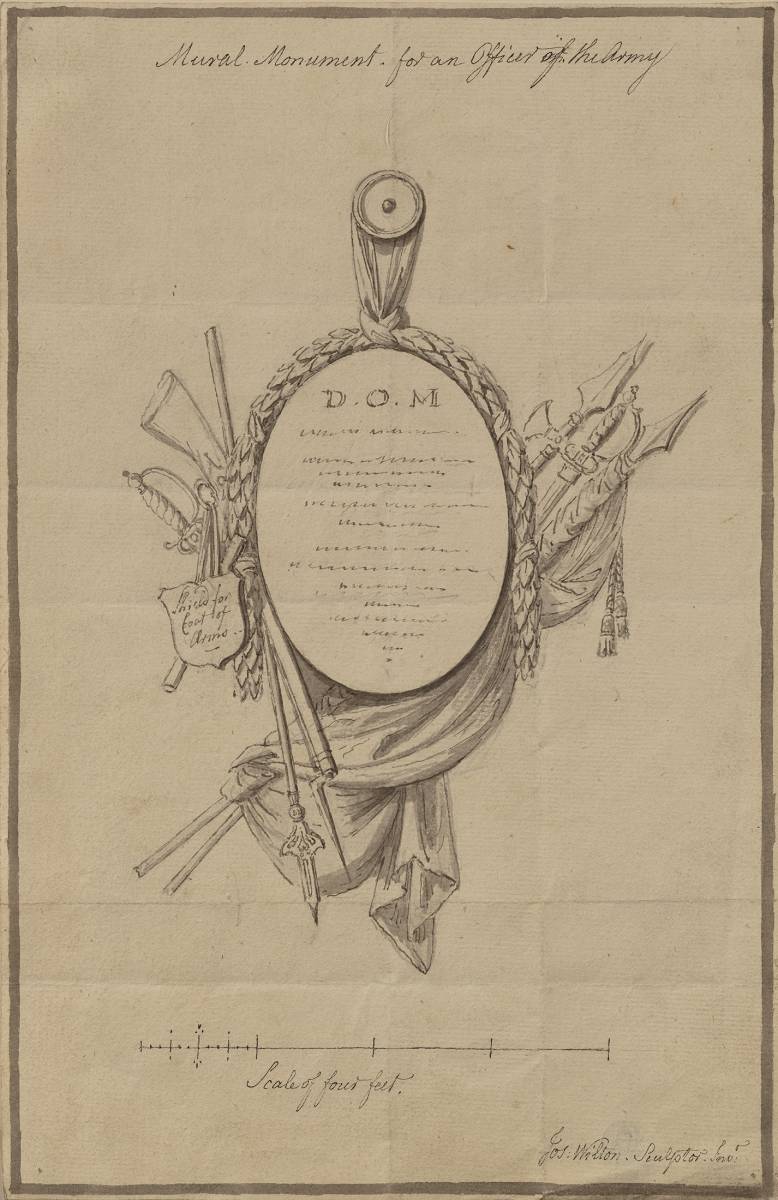This drawing by the sculptor Joseph Wilton of a design for a ‘Mural Monument for an Officer of the Army’ was almost certainly made speculatively to show prospective clients offering powerful evidence for the role drawing occupied in a successful sculptor’s workshops.
Wilton was working at the height of the Seven Years’ War, when Britain was engaged in a major global conflict and could therefore expect a stream of commissions for monuments commemorating fallen soldiers. Wilton’s studio supplied monuments globally including an equestrian statue of George III for New York (which was famously destroyed in 1776), statues of William Pitt the elder for Cork, New York and Charles Town, West Virginia, a funeral monument to Basil Keith, governor of Jamaica and a bust of George III erected in Montreal, as well as a series of private funerary monuments in the British West Indies. The present design is typical of Wilton’s refined neo-classicism, conceived as a hanging trophy of modern arms – rifle and sword are clearly visible - with a simple oval tablet left blank for the dedicatory inscription, Wilton has created an adaptable design suitable for any ecclesiastical setting. This drawing comes from a large album of designs which were dispersed in 1964, as an archive they collectively offer fascinating evidence of Wilton’s commercial model and the vital place works on paper occupied in his workshop practice. Wilton inherited a substantial income from his father, preferring to live the life of a gentleman he left much of the carving to his studio assistants.


